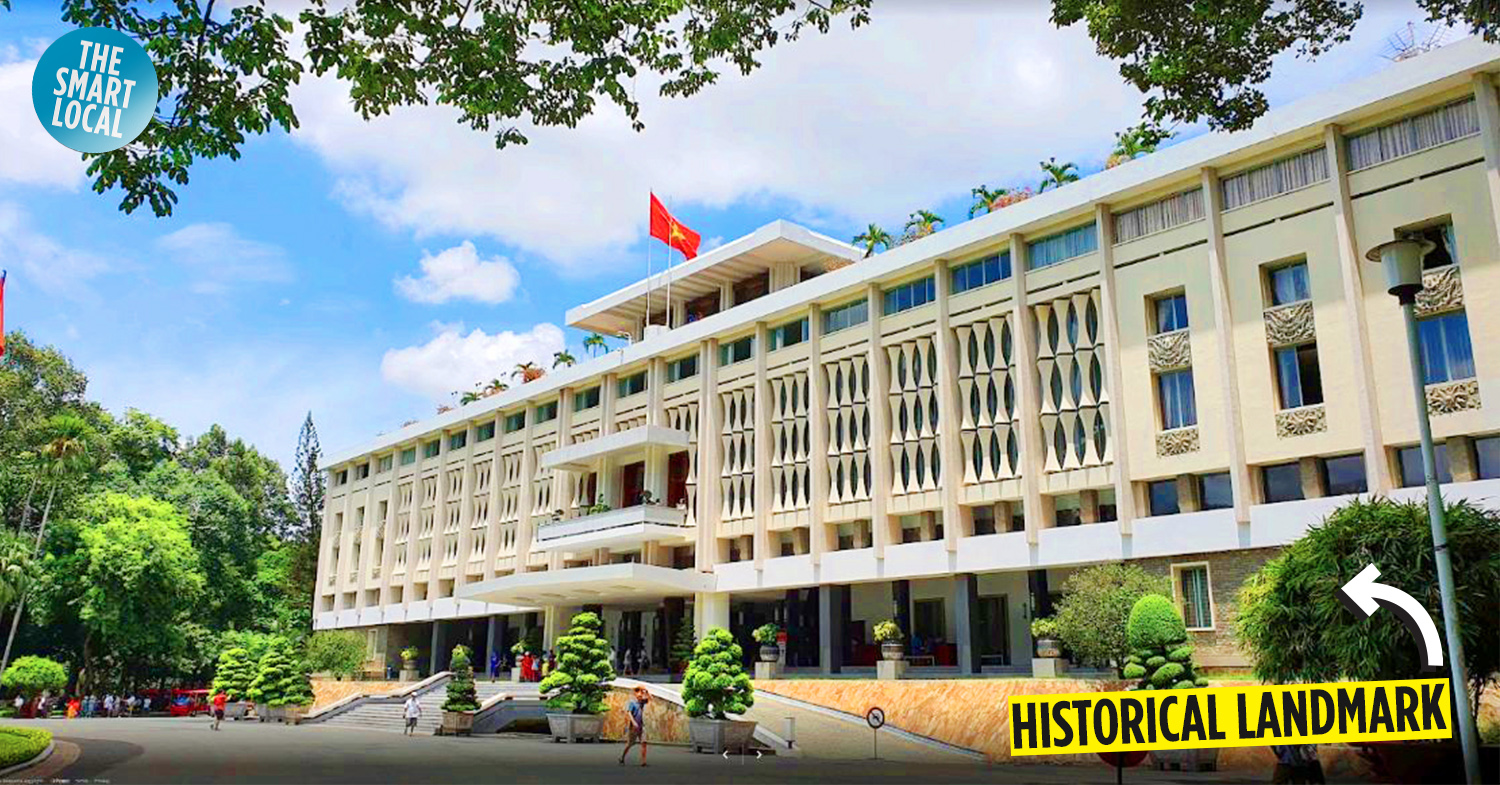Guide to Ho Chi Minh City’s Independence Palace
Built on the site of the former Norodom Palace which was damaged in a 1962 coup attempt, the Independence Palace is an unskippable landmark for any visitor to Saigon.
This opulent work of architecture was designed by Vietnamese architect Ngô Viết Thụ, who had been the winner of the First Grand Prize of Rome (Grand Prix de Rome), the world’s most prestigious architectural design competition in the last century.
After numerous transitions of power throughout the French colonial and Japanese occupation period, the palace became the home and workplace of the presidents of South Vietnam during the Vietnam War.
This is also the site that marked the Fall of Saigon and the official end of the Vietnam War on 30th April 1975, when a North Vietnamese army tank charged through its gates.
How to get to the Independence Palace
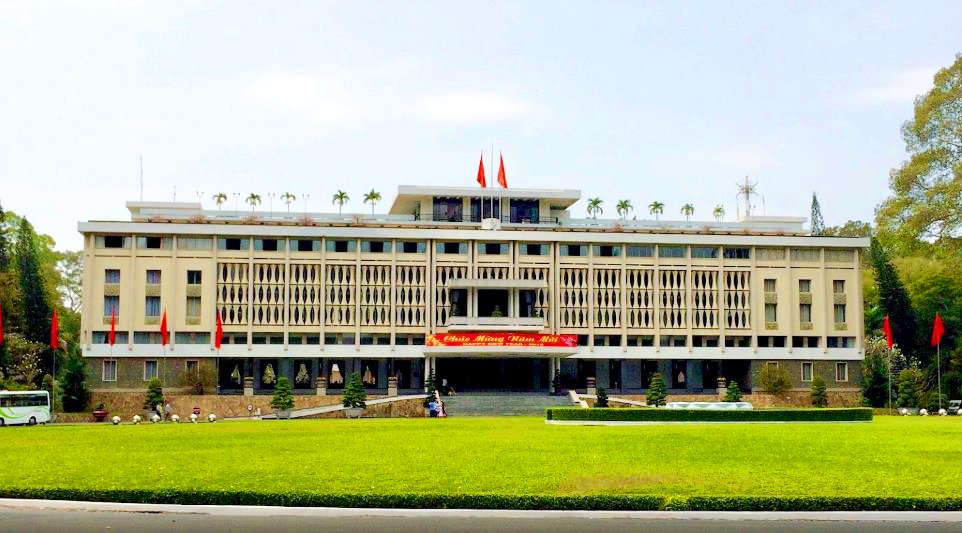
Image credit: M. Craig Enoch
Located on Nam Kỳ Khởi Nghĩa and Huyền Trân Công Chúa Streets, the Independence Palace is within 5 minutes’ walking distance to numerous tourist attractions, such as Tao Đàn Park, the Notre Dame Cathedral, Saigon Post Office, and the Book Street.
By bike
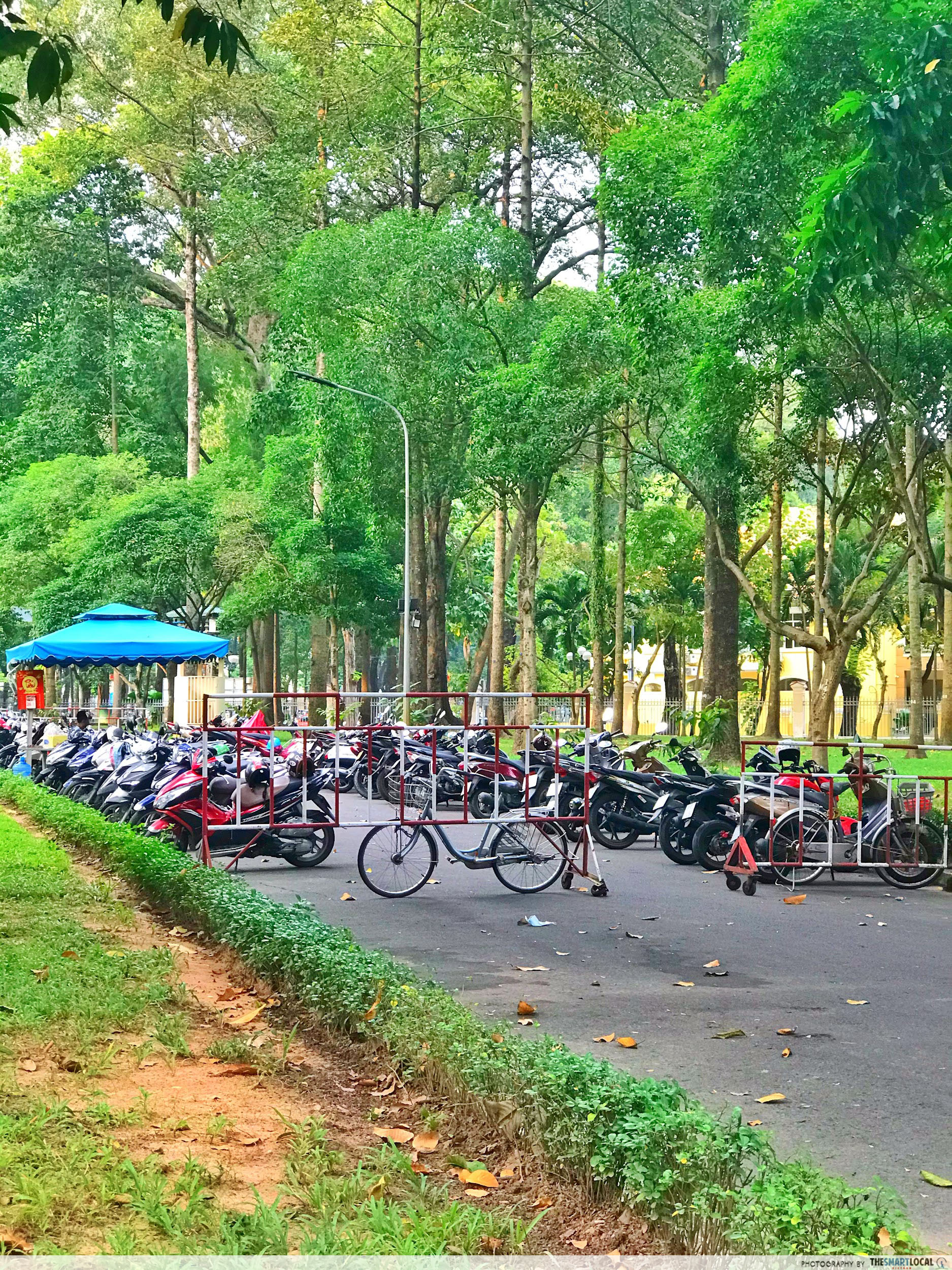
You can park your bike or bicycle at the entrance gates on Huyền Trân Công Chúa or at Tao Dan Park across the street.
By bus
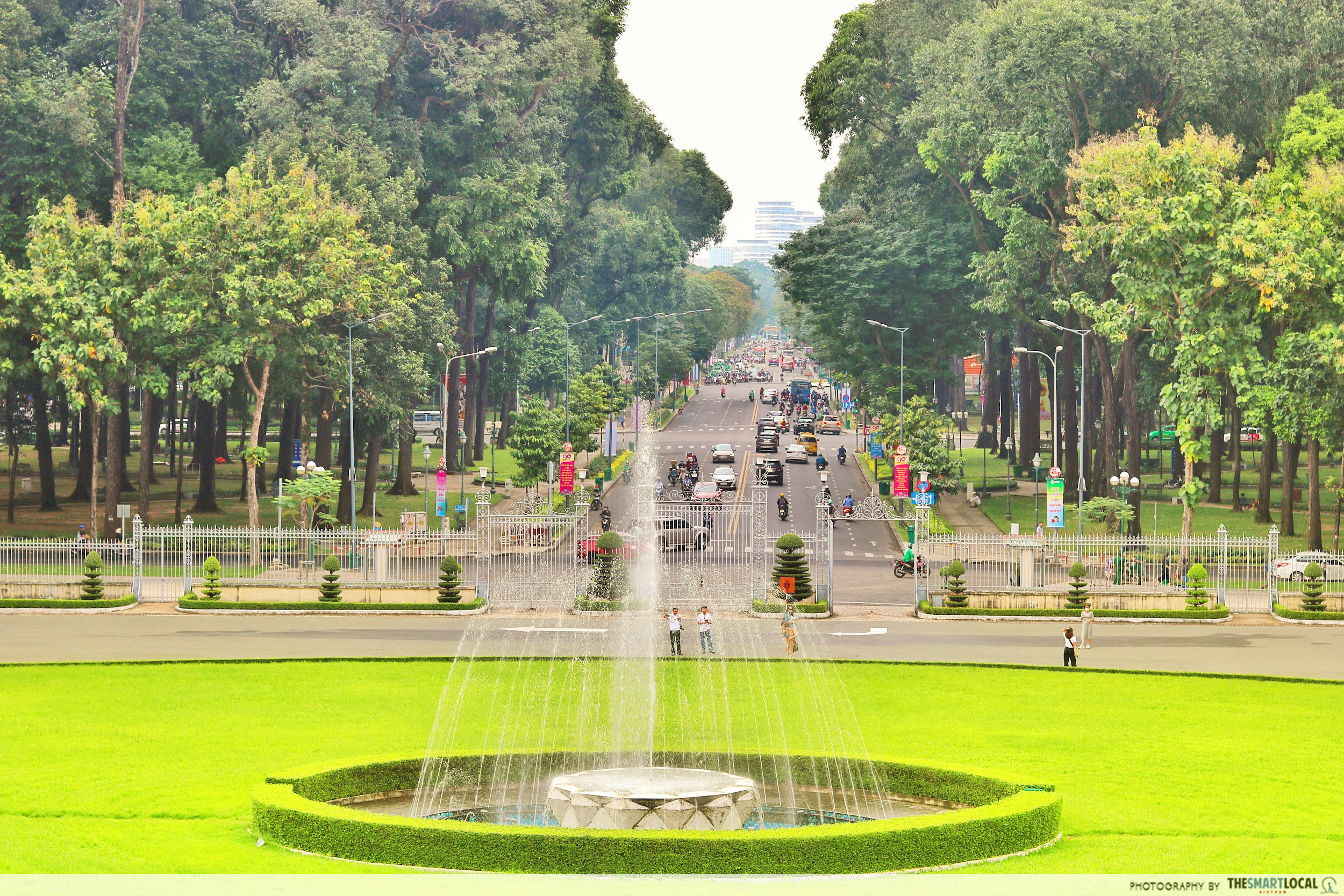
If you travel by bus, you can hop on buses no. 01, 02, 03, 04, or 05 to reach the Palace.
The design of Saigon’s Independence Palace
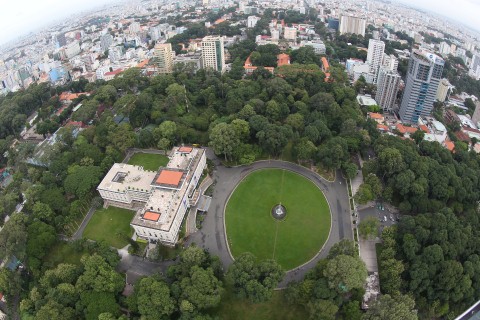
Image adapted from: Thể Thao Văn Hóa
Designed in the combined styles of modernist Western and traditional Eastern designs, the shape of the palace represents several auspicious Sino-Vietnamese characters, which can be viewed from a bird’s-eye view.
Looking at the layout from on high, you’d be able to make out the Sino-Vietnamese character 吉 (ji), or luck.
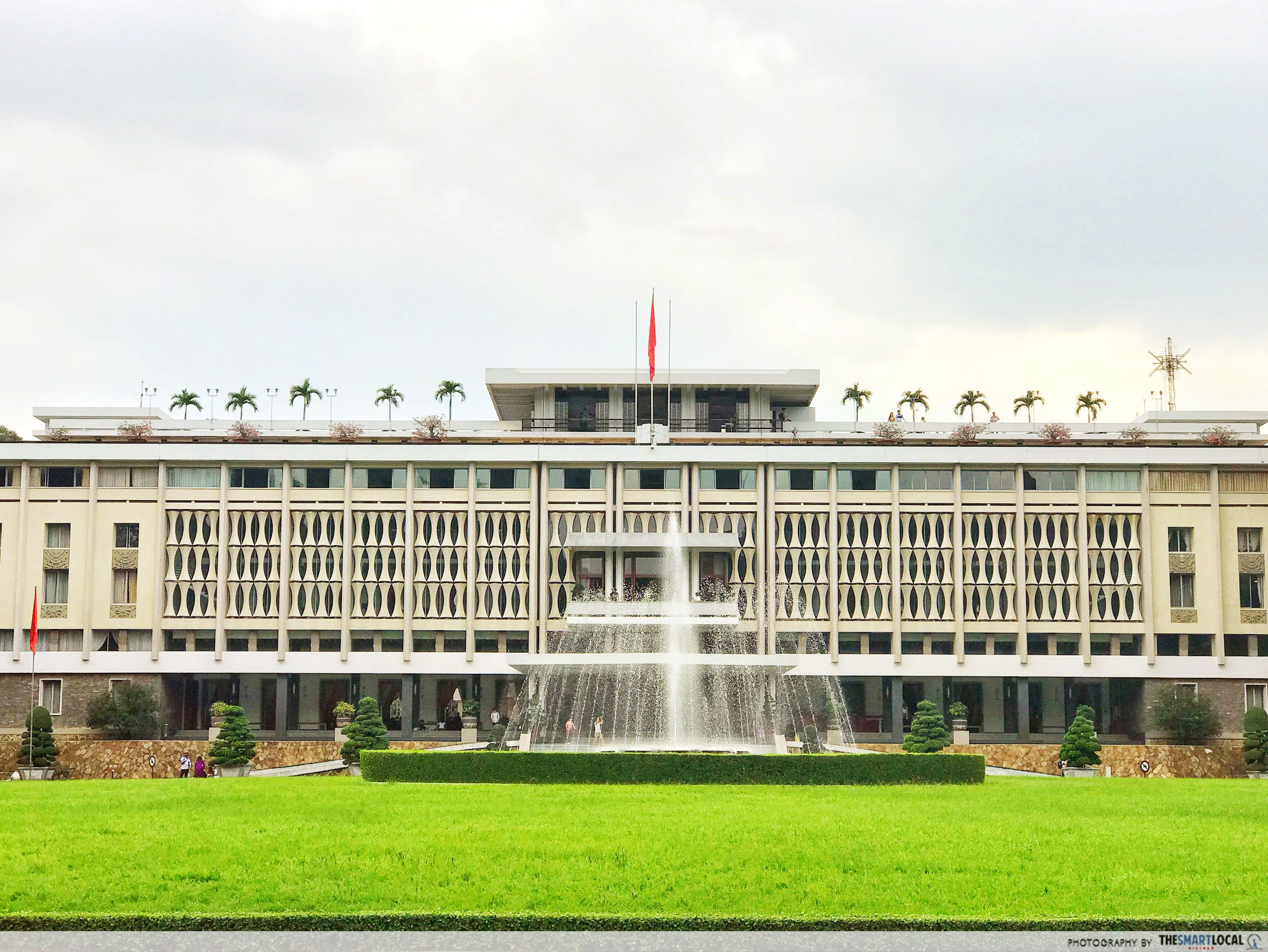
As you view the architecture from a distance at the front, you’ll spot the shapes of the characters 口 (kou), meaning mouth, 中 (zhong), meaning center, 三 (san), meaning three, 主 (zhu), meaning master (factoring in the flag pole on the rooftop), and 興 (xing), meaning prosperity.
The message that architect Ngô Viết Thụ wanted to convey through these symbolic meanings was that under the interim government, South Vietnam would enjoy freedom of speech, great leadership from the head of the state, wisdom, boldness, and humanity that represented the 3 qualities of moral character, absolute sovereignty, and eternal prosperity for the people.
The Independence Palace became a historic and cultural landmark in 1976, and ever since then, visitors have been offered tours around the conference facilities, former state rooms, presidential office and library, their living quarters, and the underground war rooms.
The outdoor area of the Independence Palace

Spanning 120,000 square meters across three levels, the Independence Palace faces the 4 main streets of Saigon’s city center, including Nam Kỳ Khởi Nghĩa on the northeast, Nguyễn Thị Minh Khai on the northwest, Huyền Trân Công Chúa on the southwest, and Nguyễn Du on the southeast.
The place has been packed with dense rows of centuries-old trees, meticulously trimmed lawns, and grass-covered hills since French colonial rule.
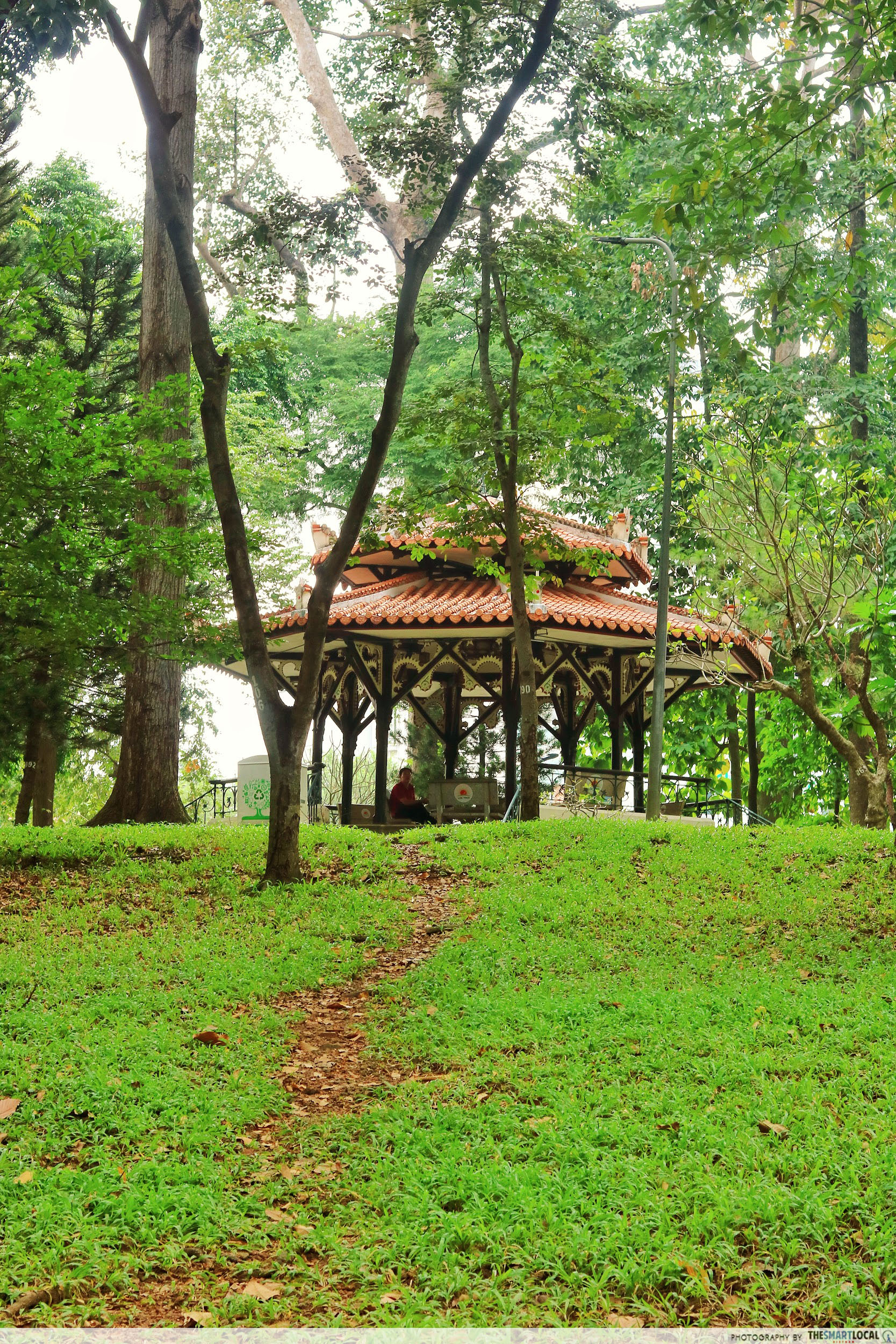
The gardens of the Independence Palace are spacious, so you’ll find plenty of directory signs dotted around the site to show you around.
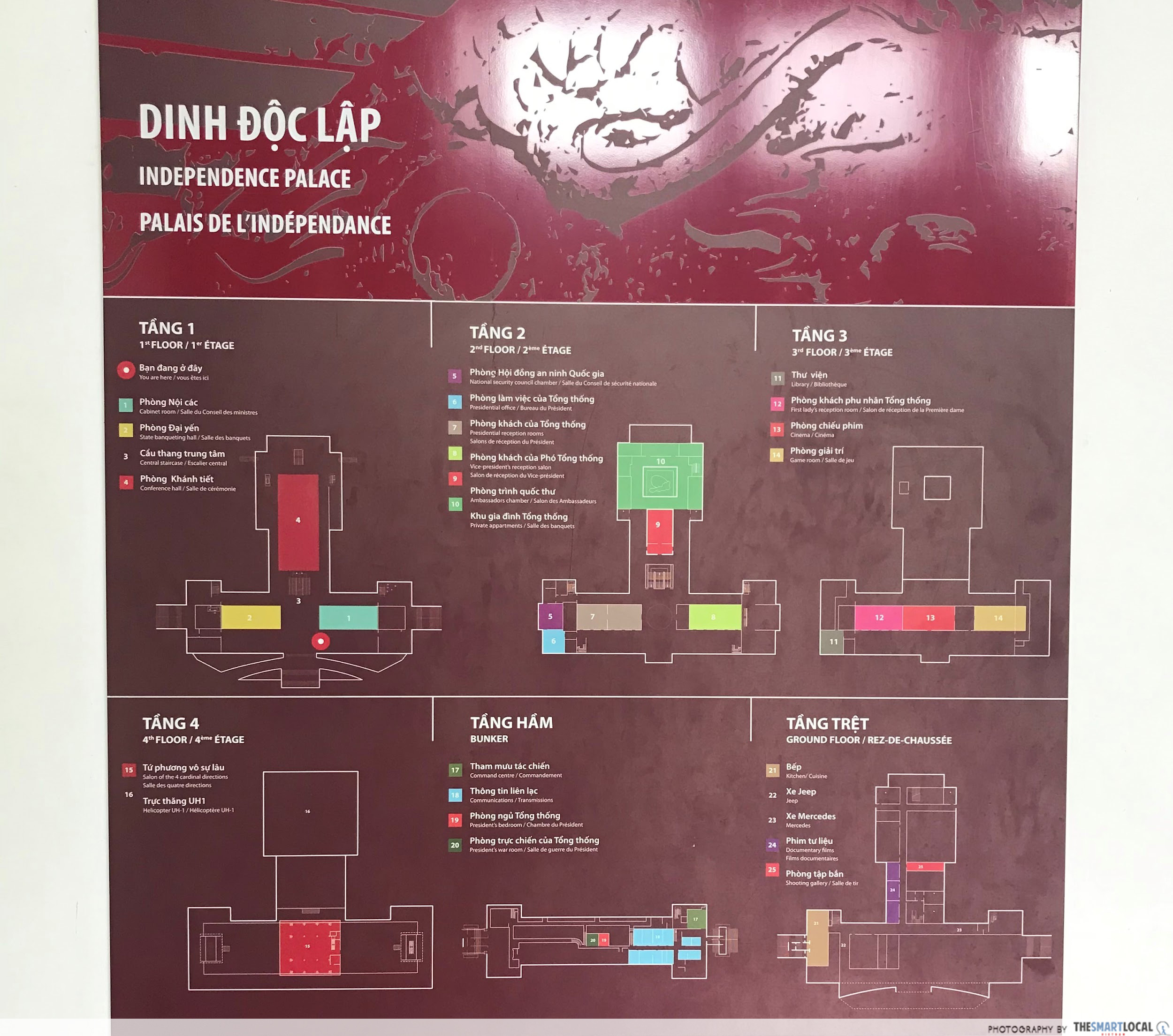
If you can’t handle a long and tiring walk, hop on an electric car for visitors for a breezy tour around the site, or hire a guide here for better assistance.
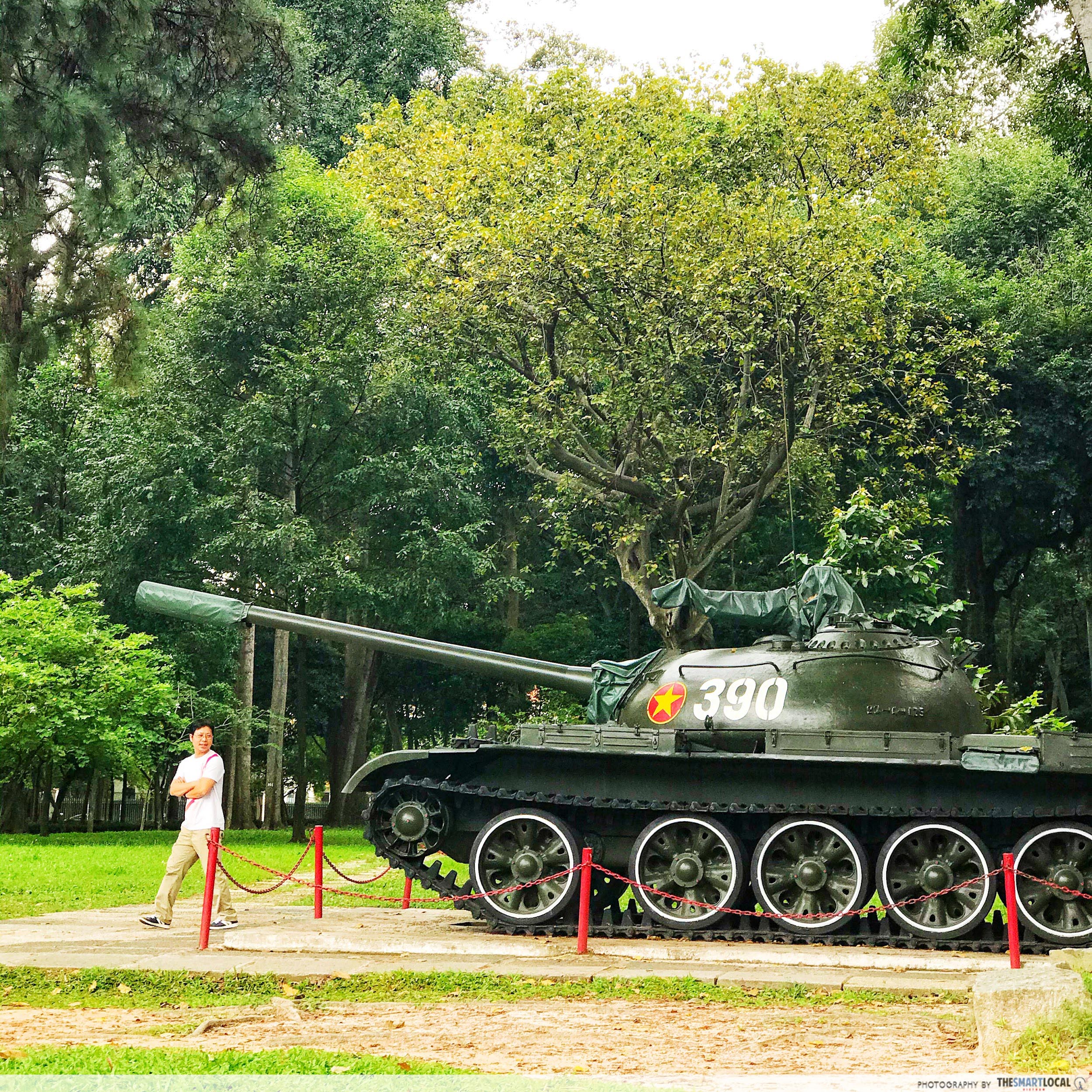
After walking through the front gate, you’ll chance upon a cordoned-off tank imprinted with serial number 390. This was the tank used by North Vietnamese armies to crash through the gate of the Independence Palace on the fateful day of 30th April 1975.
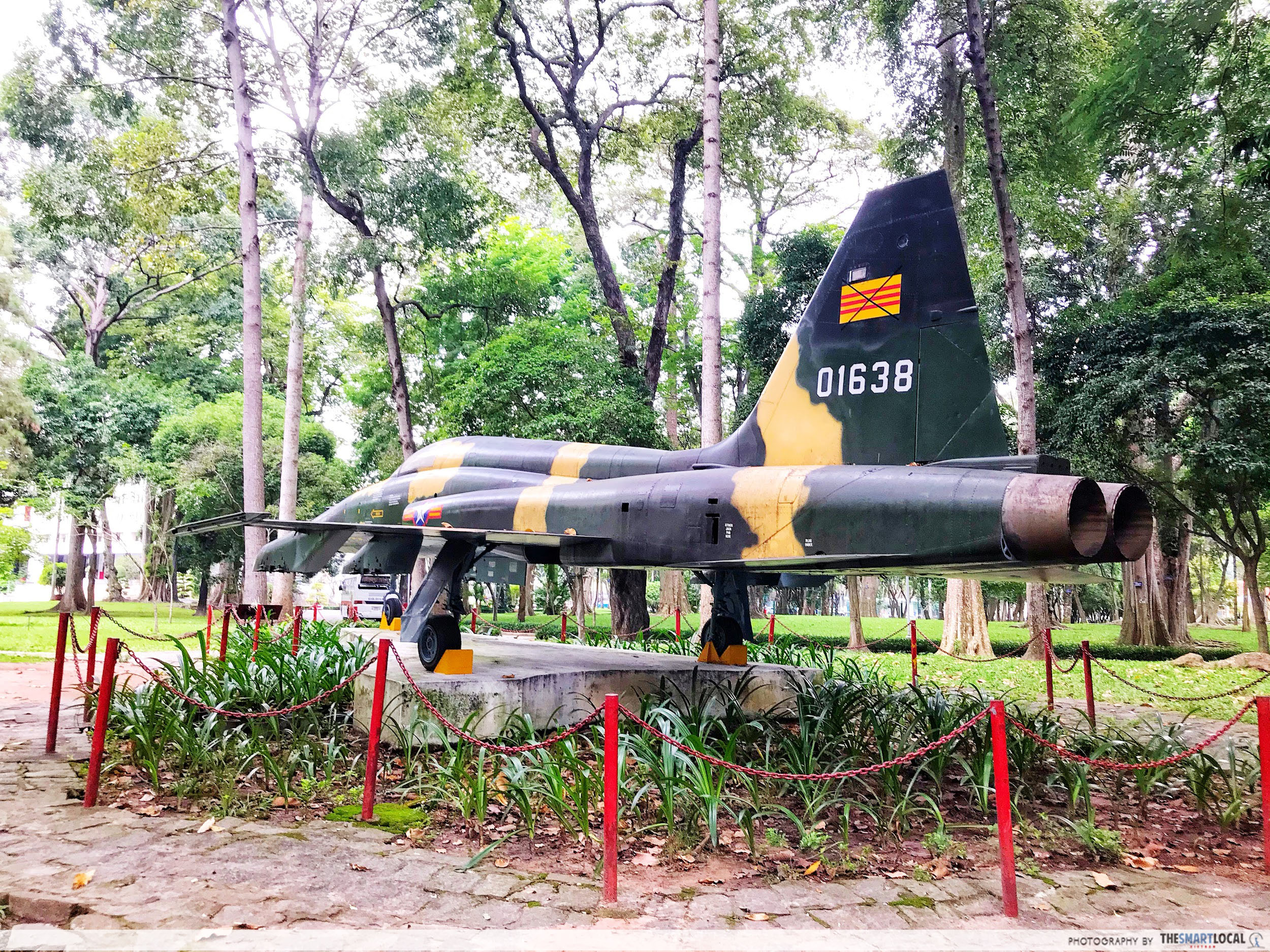
Walk straight ahead and you’ll see aircraft F-5E. This aircraft was used by a North Vietnamese spy to drop a bomb on the site in 1975.
The basement

In the basement, you’ll find a car that used to transport South Vietnam’s President Nguyễn Văn Thiệu during his office term.
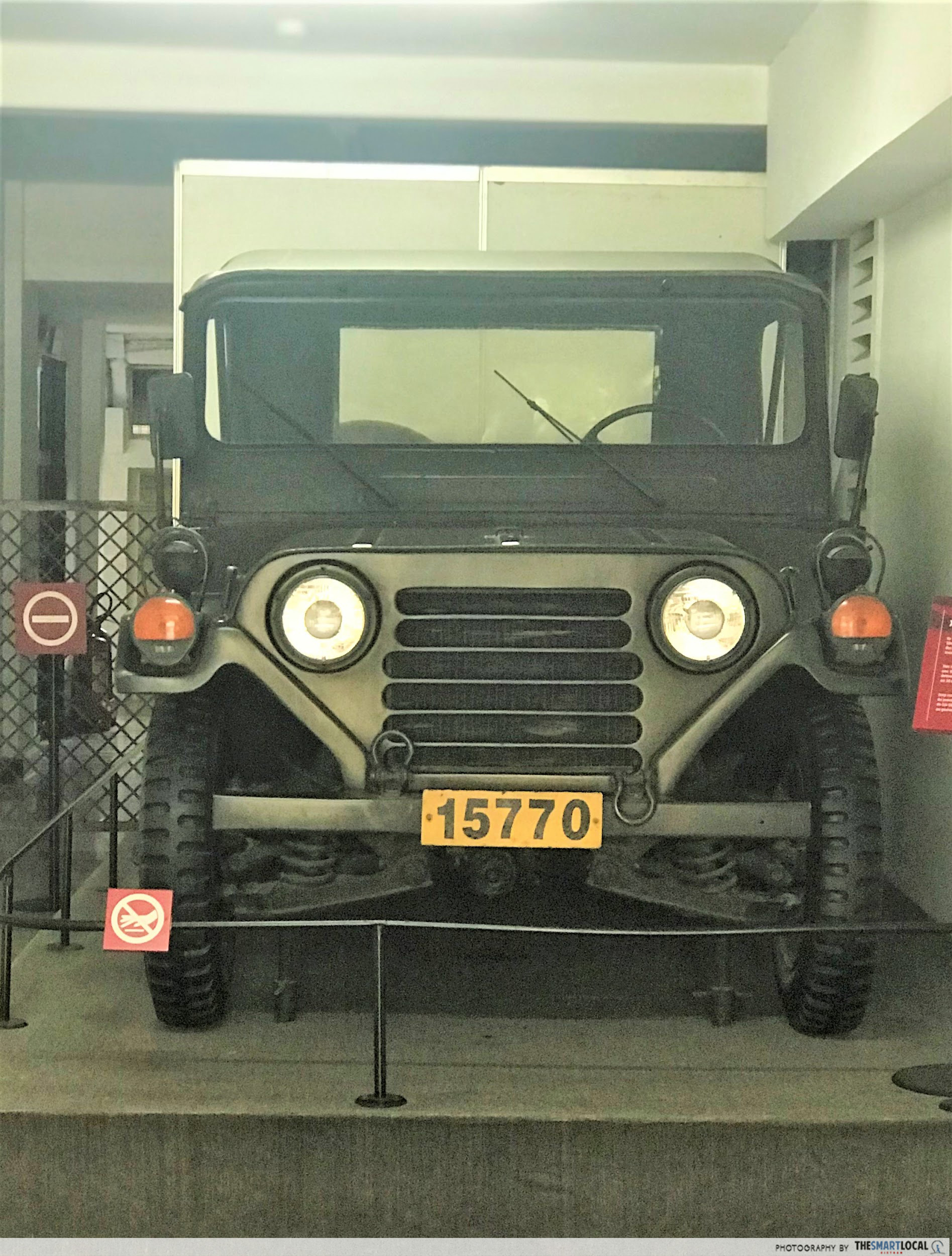
Close to it is a jeep of the model M151A2, which ferried South Vietnamese President Dương Văn Minh to Saigon Radio Station in 1975 to read the declaration to relinquish power – an event that initiated the Fall of Saigon and put an end to South Vietnam’s administration.
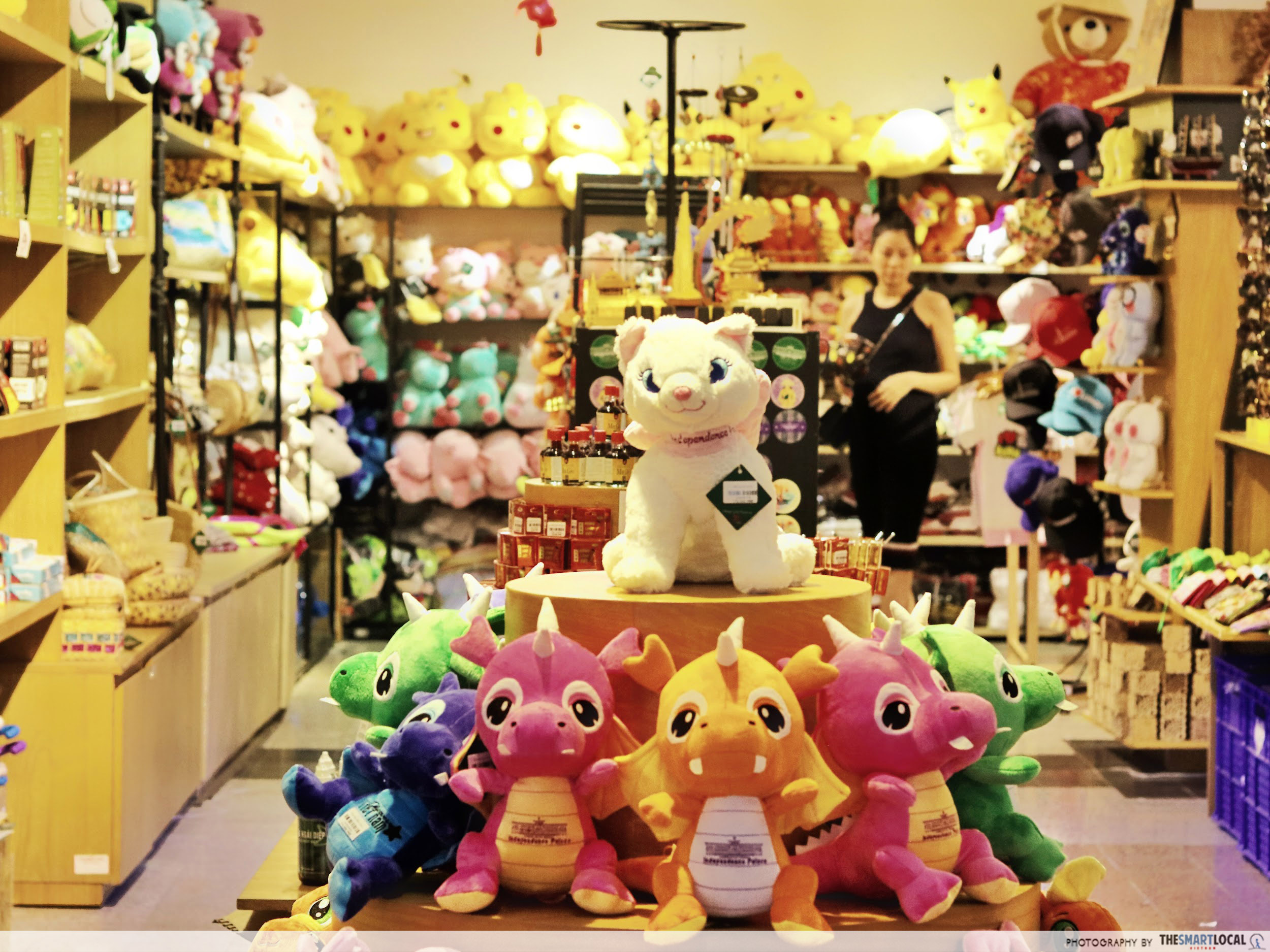
Don’t leave without checking in the souvenir shop for some knick-knacks with images of the Independence Palace printed on them. You’ll also find áo dài, flip-flops, and stuffed animals on sale here.
The emergency shelter
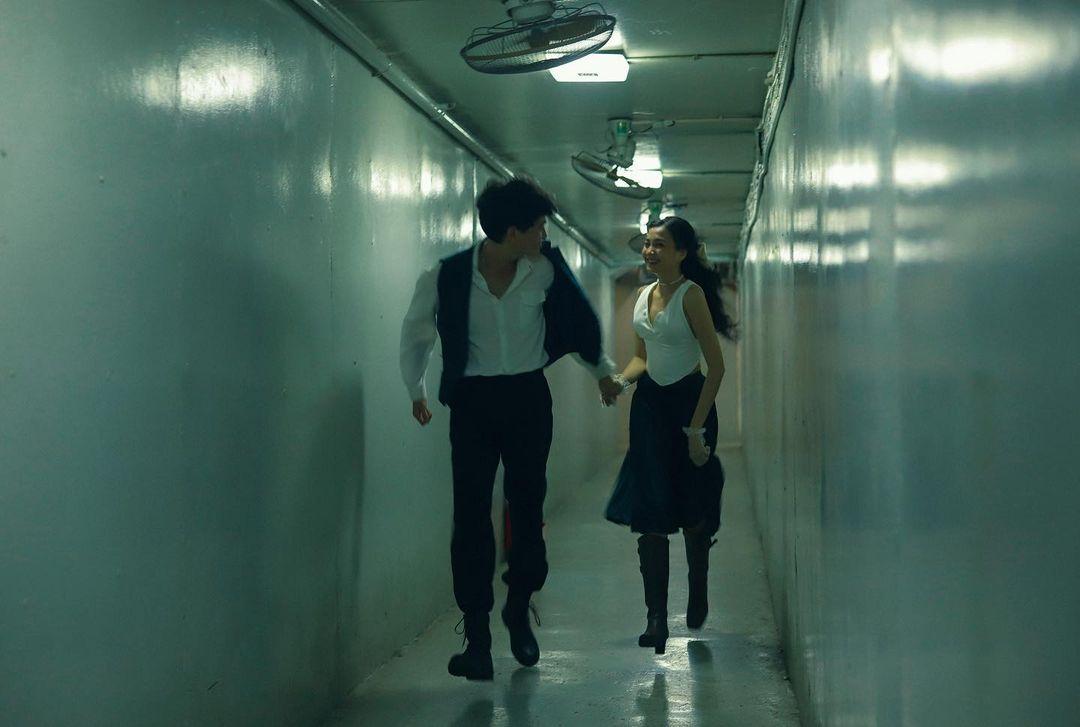
Image credit: @huynhnguy
The Independence Palace has a 72.5M-long bunker-like shelter area underneath its basement, nestled behind dimly lit and narrow staircases and passageways.
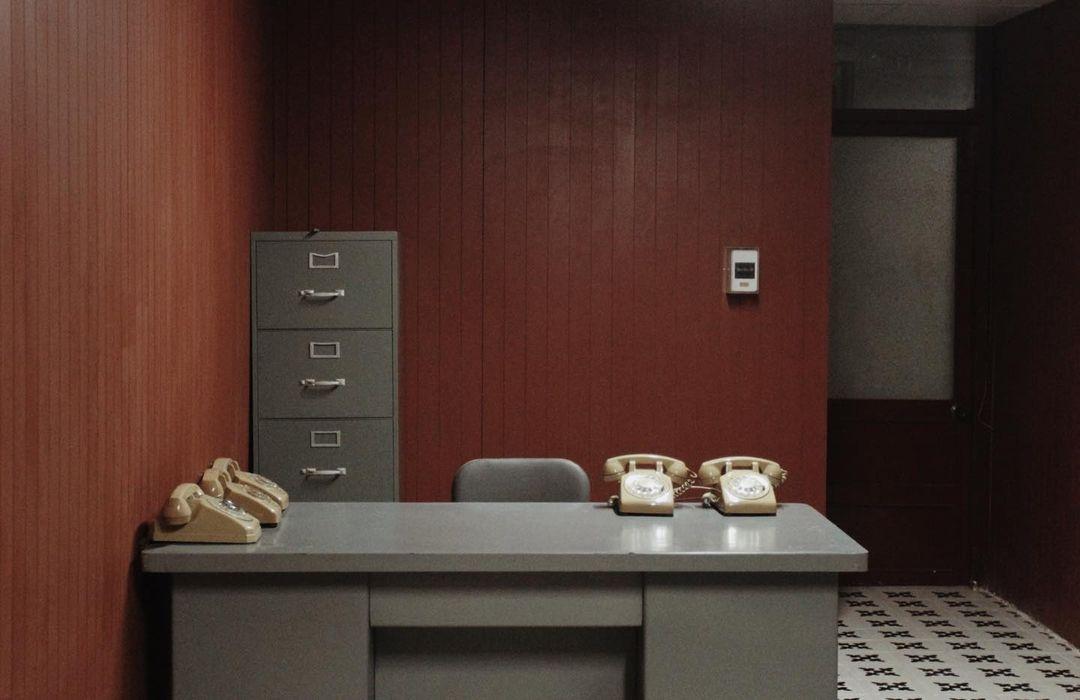
Image credit: @huynhnguy
This used to store important documents and communications equipment such as television sets, photocopiers, and telephones.
Decked out with beds and wardrobes, it also functioned as an emergency shelter.
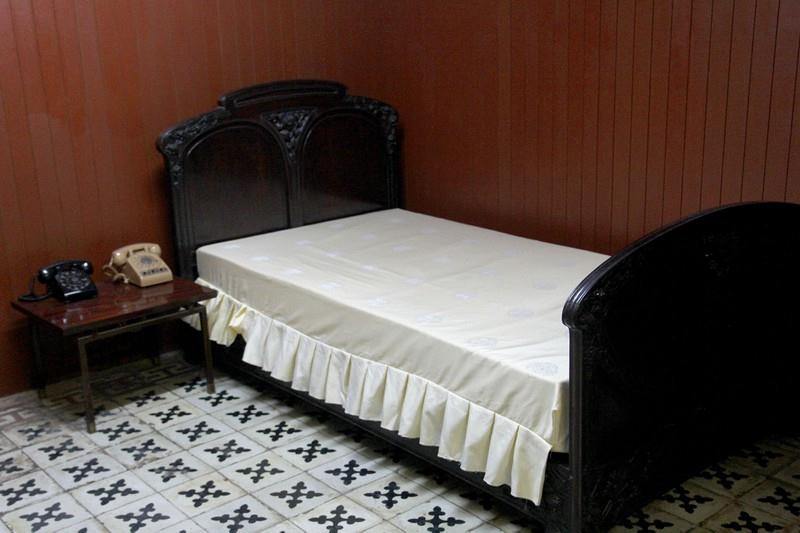
Image credit: Plo.vn
When the Independence Palace was bombed on 9th April 1975, the family of then-President Nguyễn Văn Thiệu took shelter here.
The kitchen
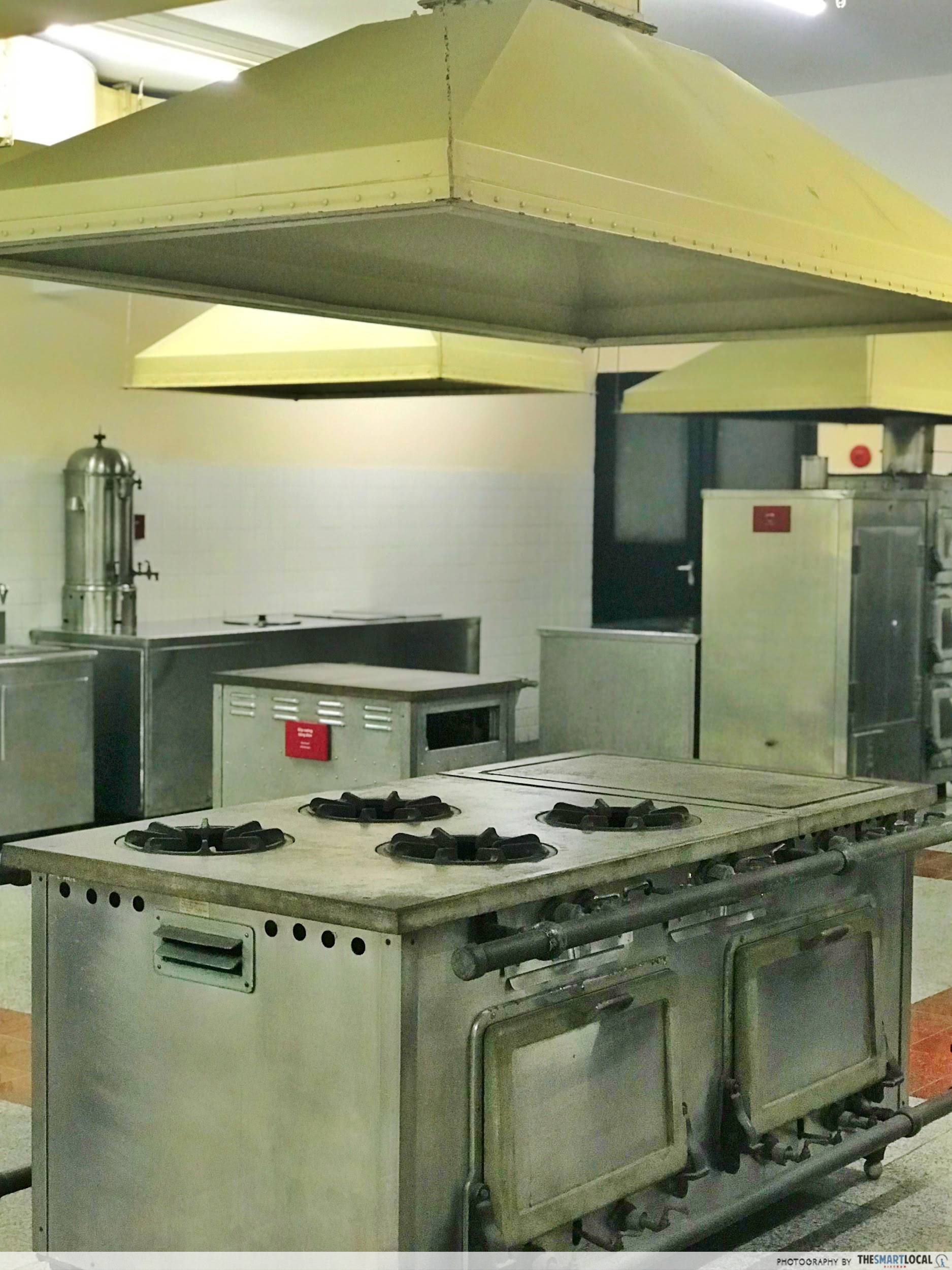
At the basement level, navigate through the long passageway to the kitchen, where most of the cooking equipment is still in mint condition and was considered pretty cutting-edge in the 50s.
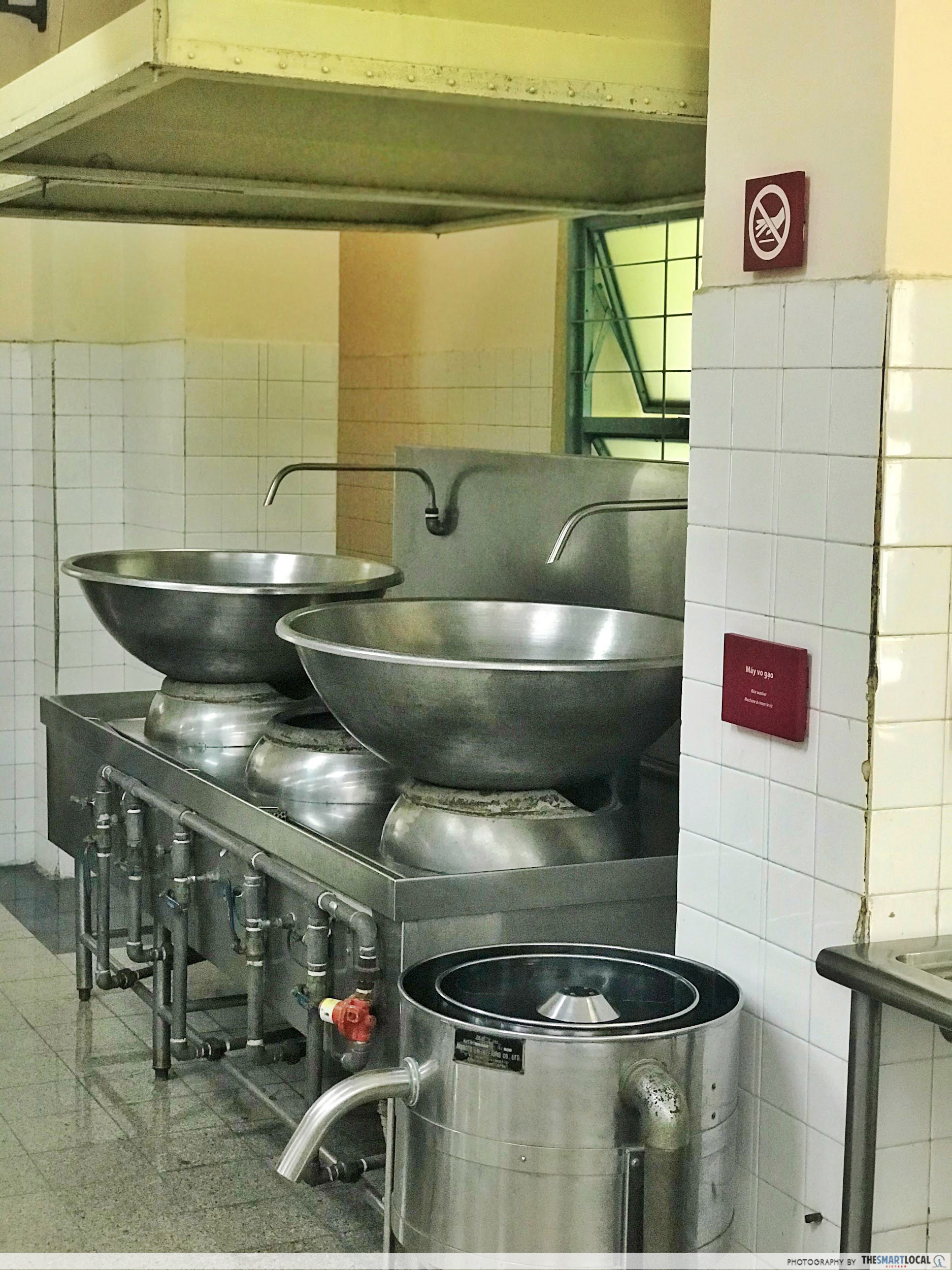
You’ll find equipment such as cooking stoves, a rice washing machine, different sinks for washing meat and vegetables, as well as a cocktail-making table.
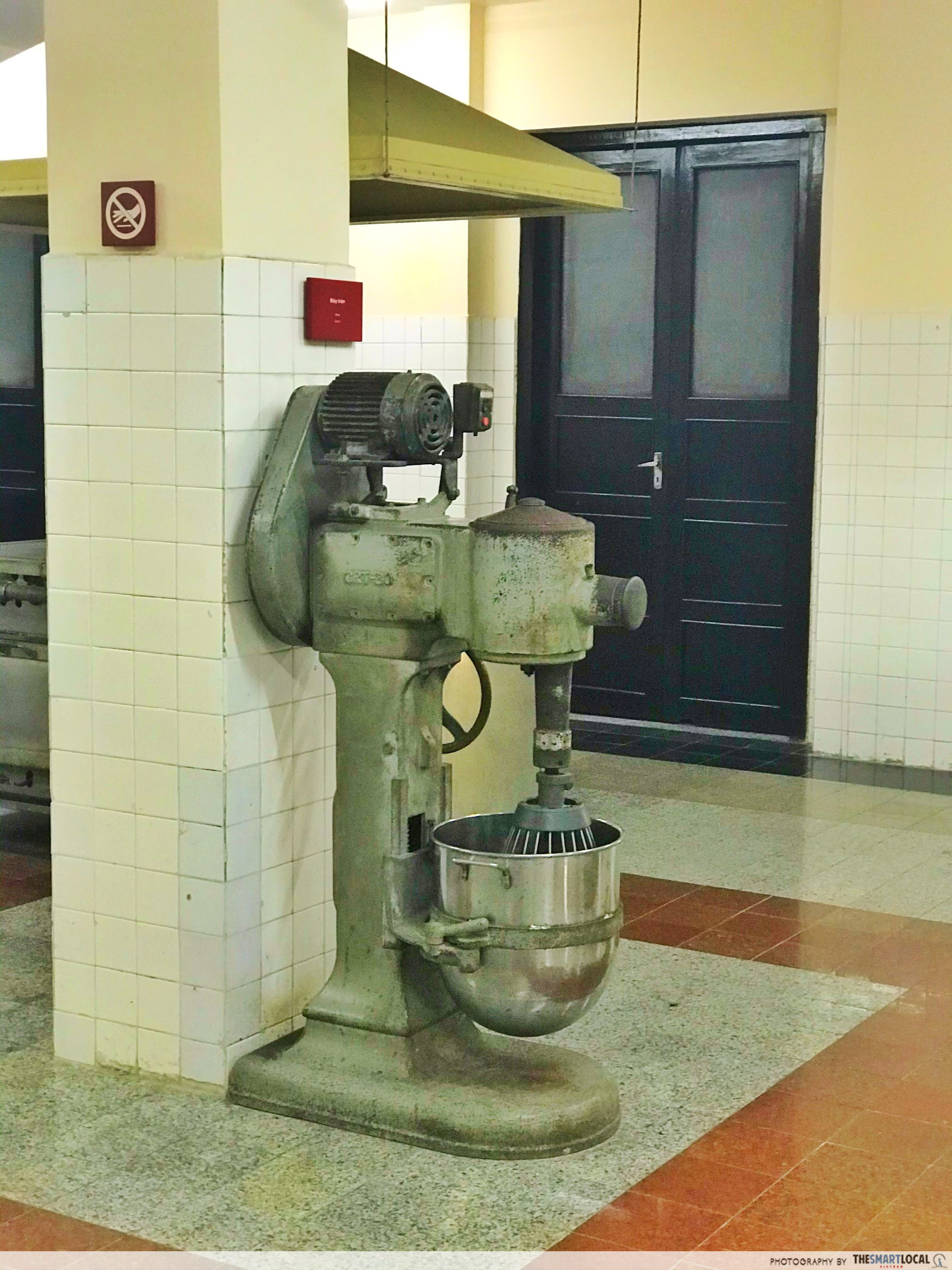
The chambers on the 1st floor
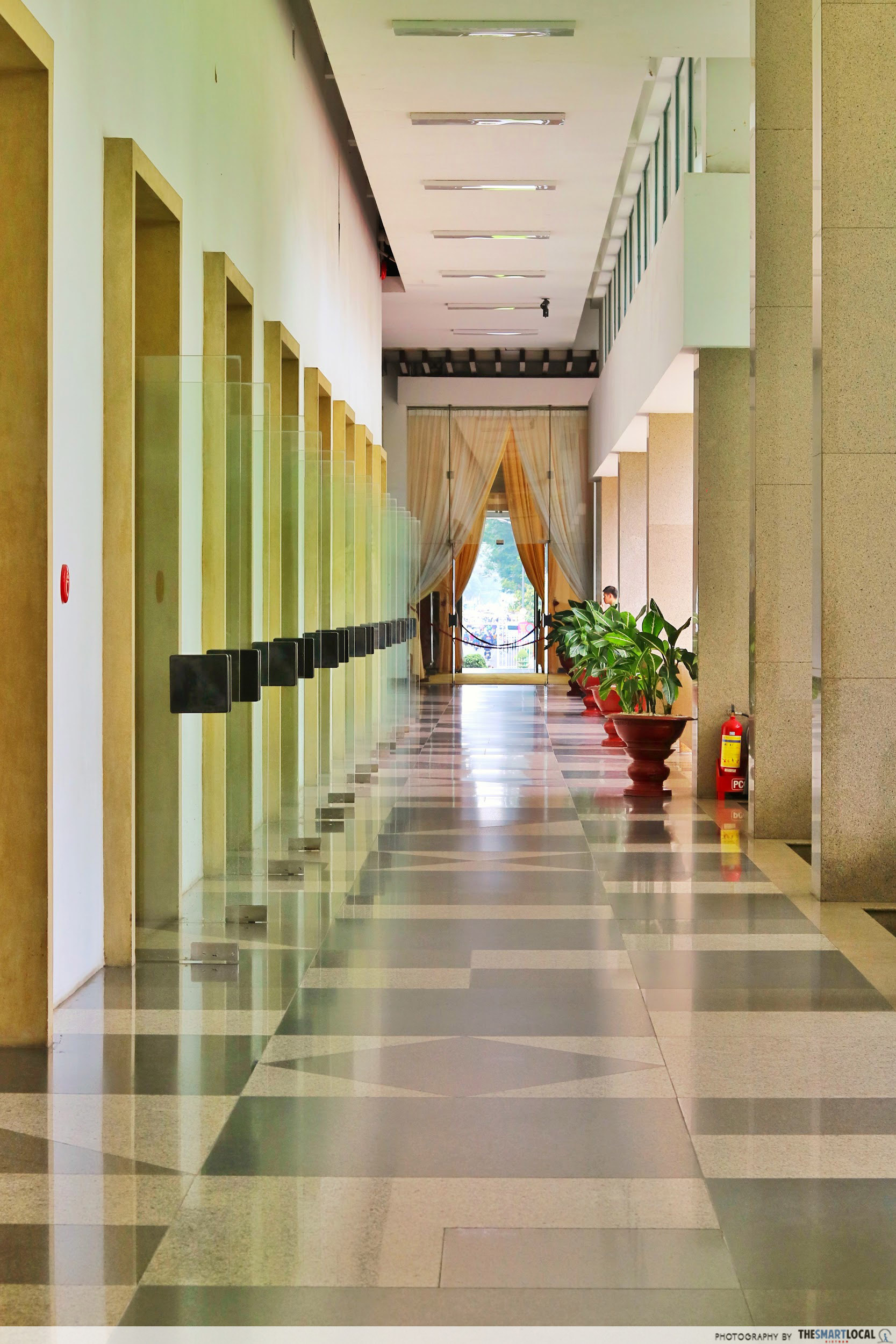
After ascending to the 1st floor, take a left turn to visit the Banquet Chamber in the Independence Hall.
Used for formal dinners and state receptions, this was also known as the state dining room and can seat over 100 guests. This is where South Vietnam’s former President Nguyễn Văn Thiệu and Vice President Nguyễn Cao Kỳ were sworn into office on 31st October 1967.
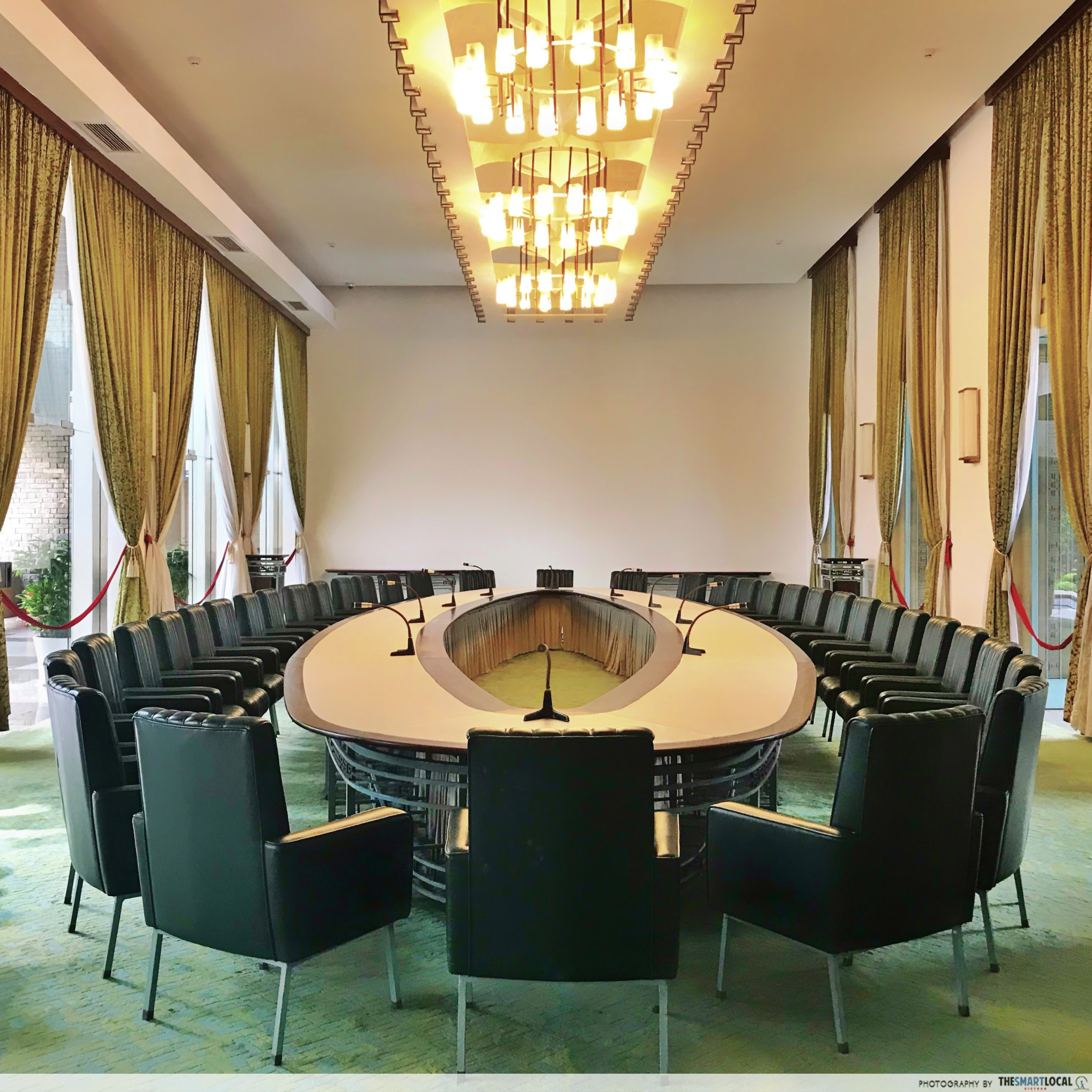
On the right side of the hall is the Cabinet Room, where the cabinet secretaries and senior advisors serving South Vietnam’s presidents met for briefings.
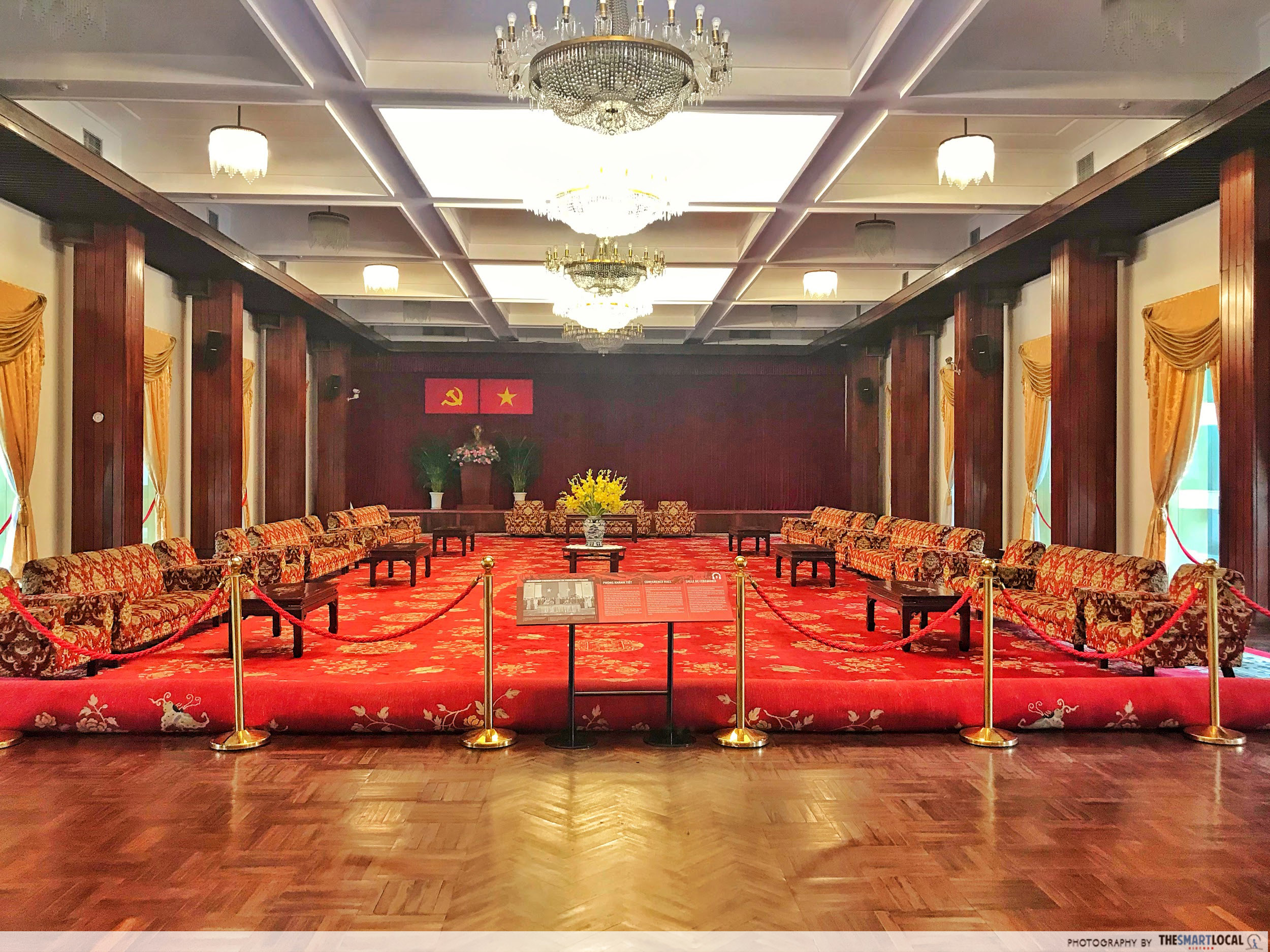
Also on level 1 is the Conference Hall, spacious enough to seat 500 people. Decked out in red and bursting with grandeur, this place was used for formal events that involved press conferences, such as the introduction of the cabinet and signing of state-level agreements.
The chambers on the 2nd floor

On the 2nd floor are the two guest reception rooms used by the then-presidents of South Vietnam.
Between the two guest reception rooms, one is smaller with a capacity of eight seats and meant for more private meetings. This room boasts striking interior designs with a sweeping use of red for the chairs, tables, and a rug, plus traditional Vietnamese motifs often used in Vietnam’s palaces during the imperial times – reminiscent of the chambers in Huế’s Forbidden City.
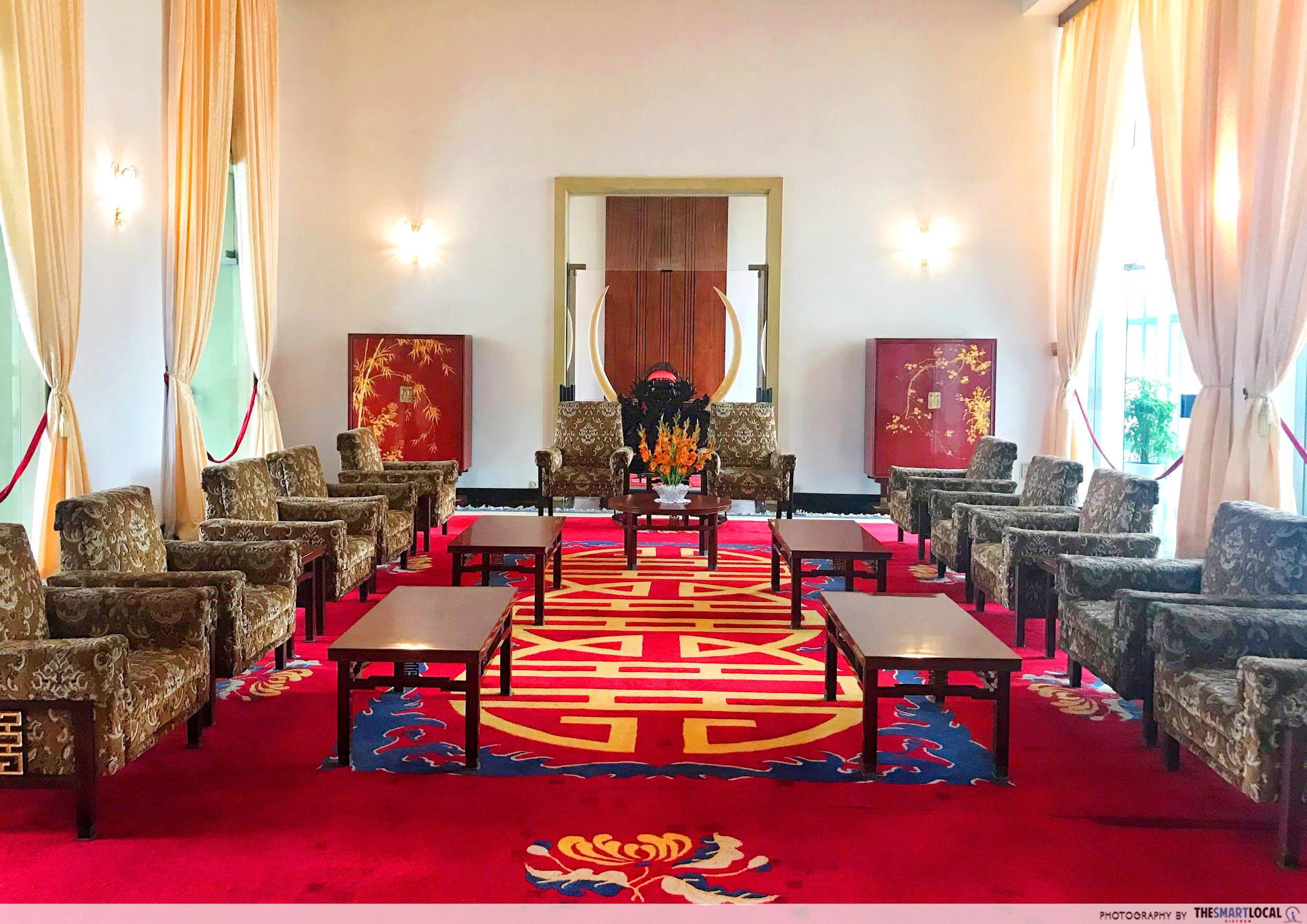
The other room is bigger with twelve seats, featuring upholstered chairs and a more contemporary flair.
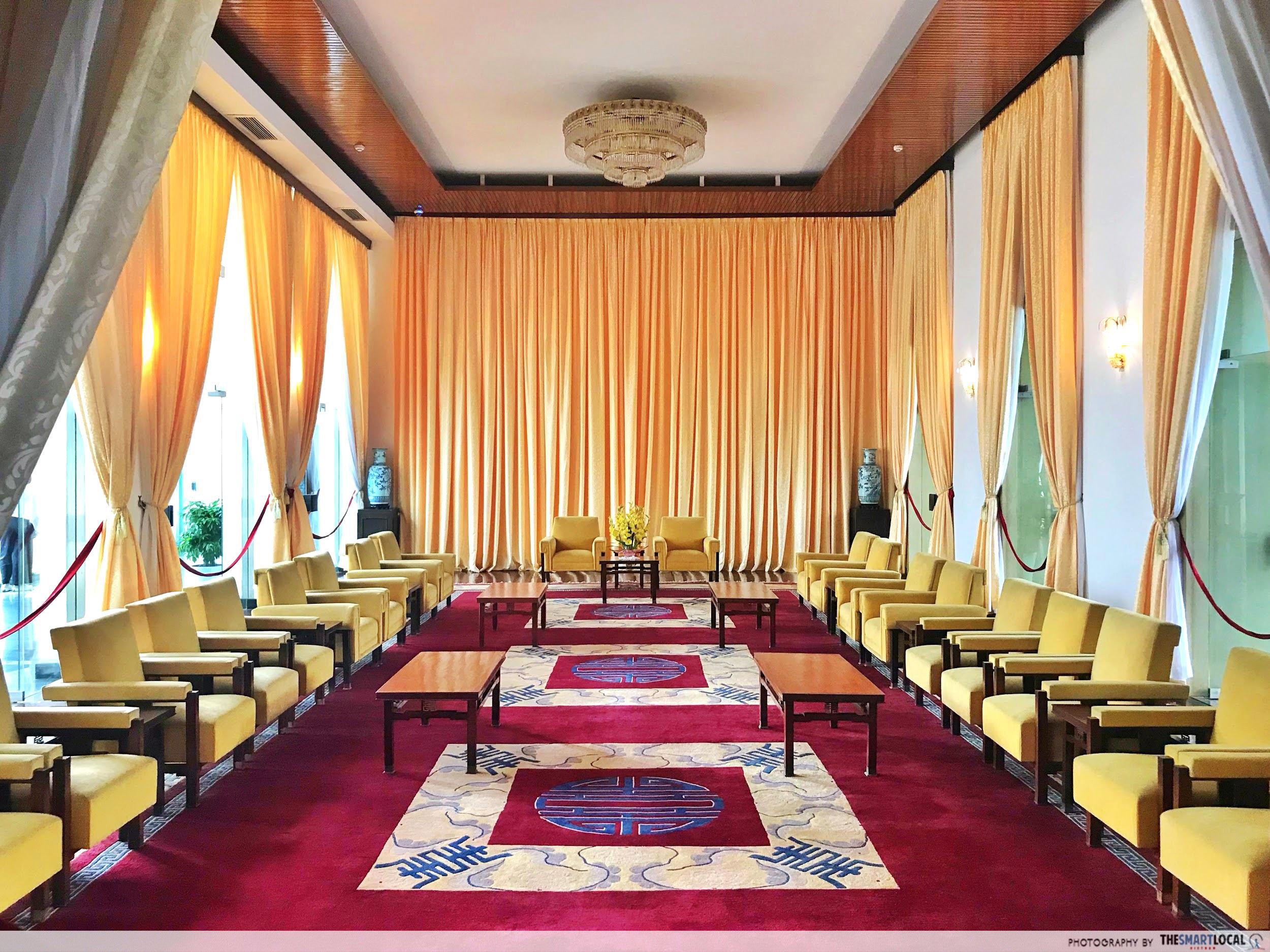
Decorated with yellow chairs and an exquisitely designed red rug, this place used to receive foreign ambassadors who presented letters of credence – formal letters that establish a relationship of an ambassador with a country – to South Vietnam’s head of state.
 The view of Saigon from the level 2 balcony
The view of Saigon from the level 2 balcony
Do not depart from level 2 without heading to the grand balcony just yet. From the balcony, visitors will be able to take in a stunning view of the site’s front garden with its fountain and the tree-lined road leading to the Notre Dame Cathedral.
The presidential bedroom on the 3rd floor

On the 3rd floor is the bedroom formerly used by the president and his wife.
The wood-bedecked sleeping area, which includes a bed, a side table, a reading chair, and a wardrobe, is cordoned off from visitors for conservation.
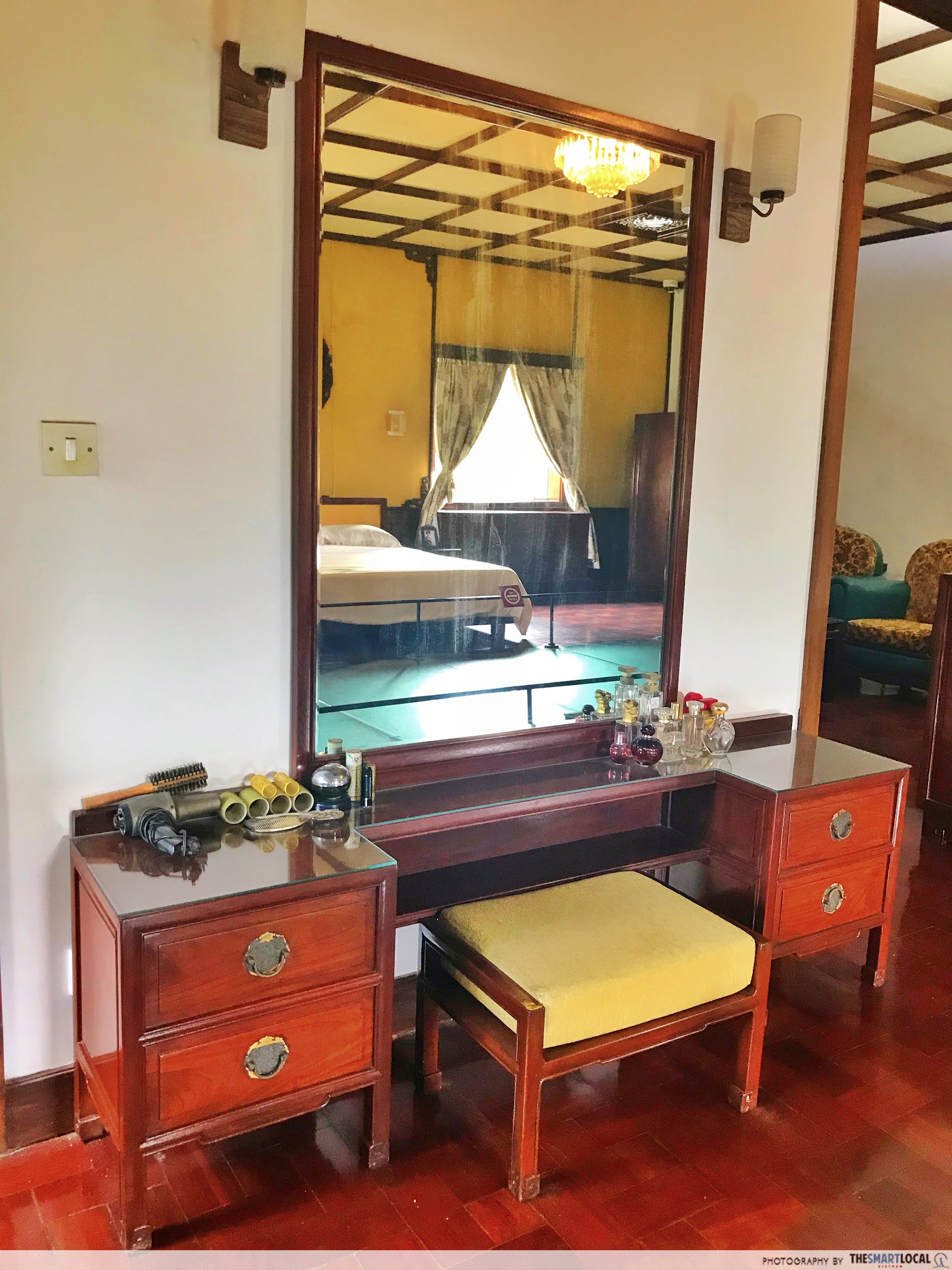
Across the bed is a brown dressing table built in 1970s fashion.
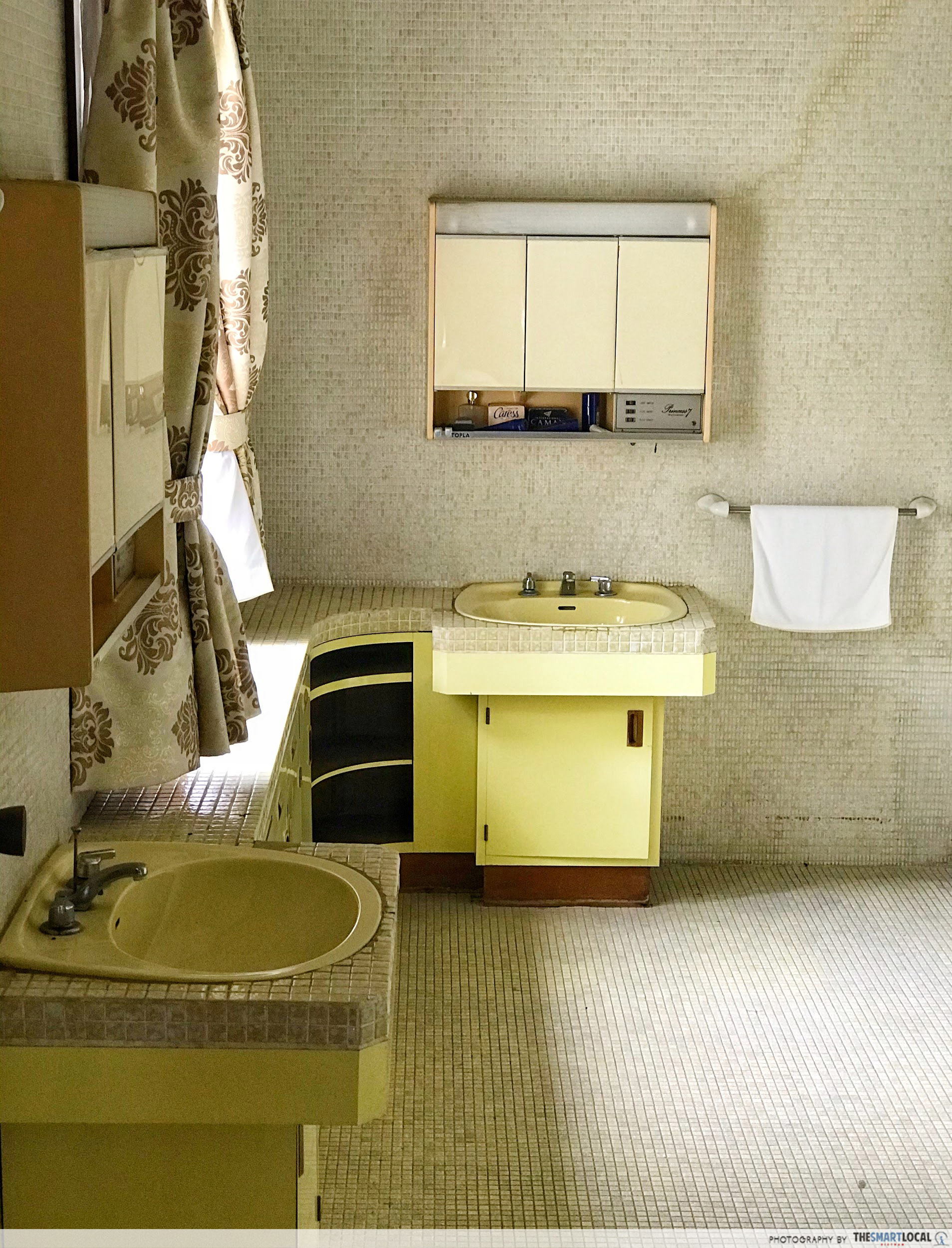
Decked out with bright colored terracotta floors and walls, yellow double sinks, and cabinets, the well-preserved presidential bathroom is filled with vintage elements reminiscent of French interior designs of the 50s.
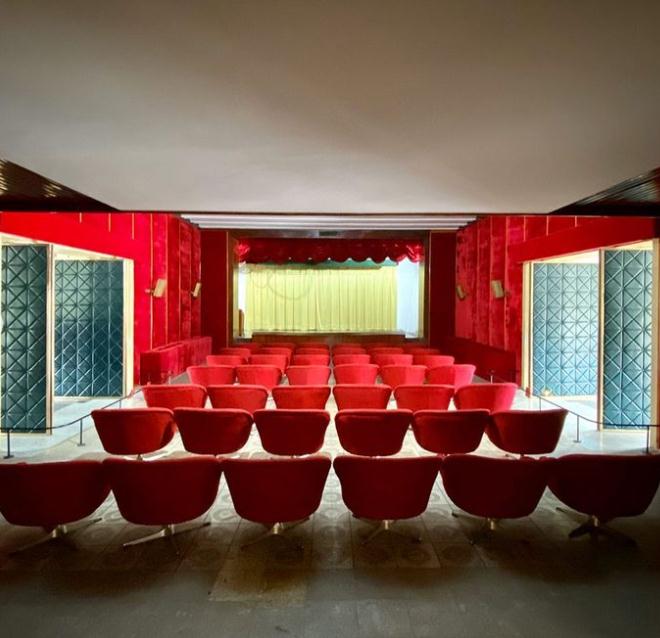
Image credit: @jkottke
On this level, you’ll find a small cinema which catered to the entertainment needs of the presidential family and their guests. Decked out in red, this glamorous cinema can host up to 50 guests.
Playgrounds
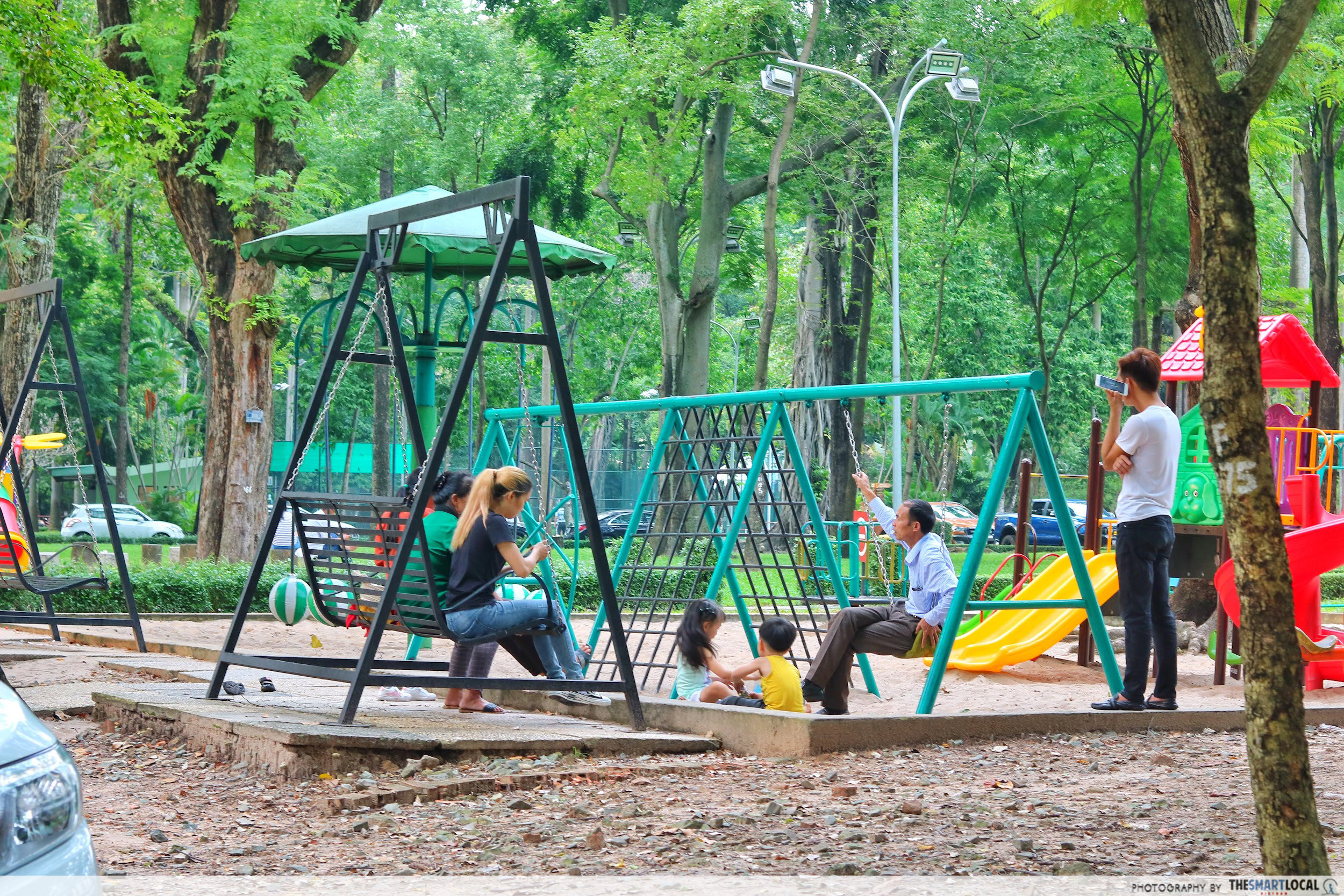
After touring the palace, you can take your kids out to play at the outdoor playgrounds, complete with swings and colorful slides.
Coffee shops and restaurants
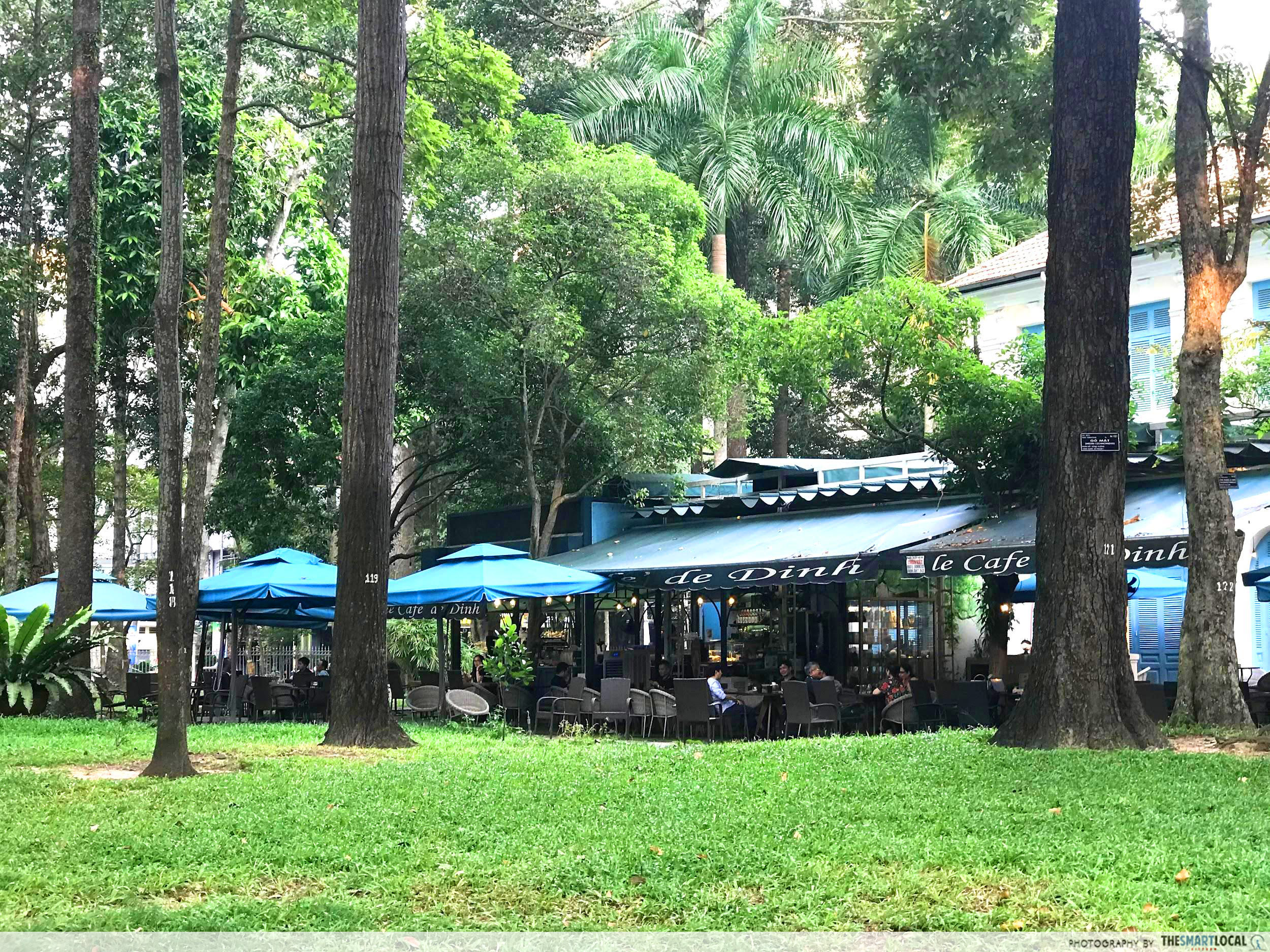 Le Cafe de Dinh
Le Cafe de Dinh
If the long walk around the Independence Palace wears you out, drop by one of 5 coffee shops and restaurants here for some refreshing drinks and some tasty snacks.
You can either sip on a cup of coffee (VND39,000,~USD1.68) at Highlands Coffee or rest at the Instagram-worthy Le Cafe de Dinh, decked out with ample outdoor seating under striking blue umbrellas.
All of these coffee shops are surrounded by pleasant greenery and dotted at every entrance of the Independence Palace for your convenience.
Things to do at the Independence Palace
Taking a tour of the Independence Palace is one of the most recommended activities to engage in when visiting Saigon.
Inside this historical building, you can learn about the history of the city, the first families who once lived and worked here, monumental events that happened, and much more.
General admission tickets (exhibits and palace): VND65,000 (~USD2.81) for adults, VND45,000 (~USD1.94) for Vietnamese university students, and VND15,000 (~USD0.65) for children
General admission tickets (palace only): VND40,000 (~USD1.72) for adults, VND20,000 (~USD0.86) for Vietnamese university students, and VND10,000 (~USD0.43) for children
Address: 135 Nam Kỳ Khởi Nghĩa, Bến Thành Ward, District 1, Ho Chi Minh City
Opening hours: 8AM-3.30PM, daily
Telephone: 028 3822 3652
Also check out:
- Guide to Huế: Vietnam’s imperial city with ancient landmarks and scenic attractions
- Nắp Ấm: a glistening Da Lat hotel filled with Christmassy vibes
- Đợi Một Người: a hilly venue where you can walk on the water
- Capella Hanoi Hotel: a symbol of 20th-century luxury and comfort
- Hotel Le Bouton: a nature-themed Da Nang hotel with in-room jacuzzi
- 10 staycation ideas in Ho Chi Minh City for a hassle-free getaway
Cover image adapted from: cuong le
Enjoying The Smart Local Vietnam? Follow us on Facebook, Instagram, Telegram, and LinkedIn for more stories like this. If you have a story to share, email us at pressvn@thesmartlocal.com.
